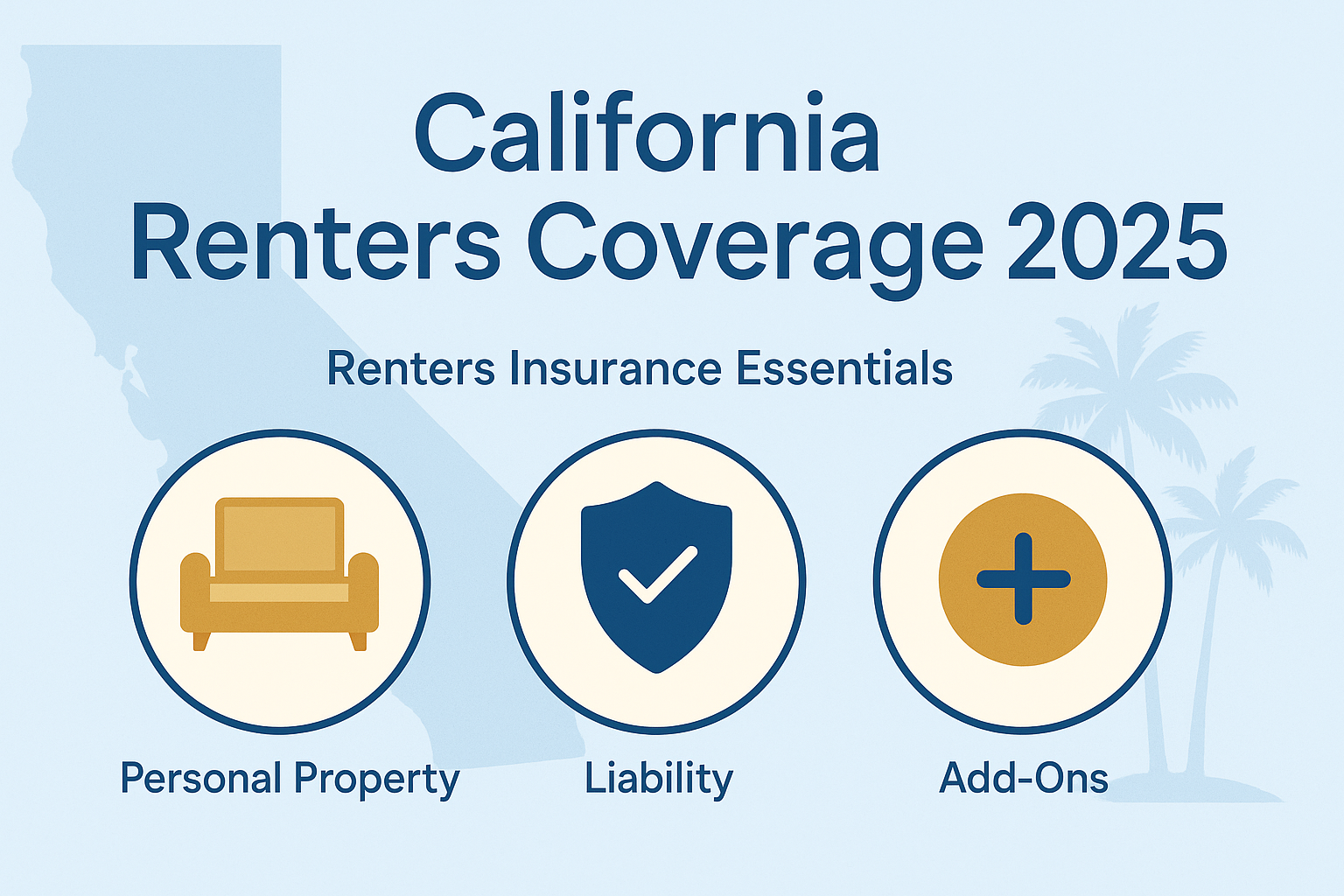California Renters Insurance (2025): Minimum Coverage & Add-Ons

In 2025, renters in California should ensure they have adequate insurance coverage — even though the state does not mandate renters insurance by law.
A common starting point many leases require is at least $100,000 liability protection plus enough personal property coverage to replace your stuff — typically $20,000–$30,000 as a baseline.
In this guide you’ll learn key coverage components: your personal property basics, liability limits, deductible strategy, scheduling high-value items, and smart claim tips for renters in California.
Personal Property Basics
Your renters insurance policy covers belongings such as furniture, electronics, clothing, and bikes under “Coverage C.”
In California, there’s no state-mandated minimum, but leases often recommend at least $20,000–$30,000 to replace your belongings.
Liability Limits
“Coverage E” provides protection if someone is injured in your unit or you accidentally damage another’s property.
Most California landlords require a minimum of $100,000 liability coverage and may ask to be listed as an interested party.
Deductibles
The deductible is what you pay before insurance kicks in. A higher deductible lowers your premium but raises your out-of-pocket risk.
Common options are $500–$1,000; select what fits your budget and risk tolerance.
Scheduled Items & Add-Ons
Standard renters insurance has limits on valuables like jewelry, art, or bikes.
You can “schedule” these items or add endorsements for full value protection. Optional add-ons include:
- Replacement-cost vs. actual-cash-value coverage
- Bike and e-bike protection outside the home
- Water damage or sewer backup coverage
- Identity-theft or phone protection riders
Claims Tips
- Keep a photo/video inventory and store receipts for valuables.
- Update coverage when you buy new furniture, tech, or jewelry.
- Report losses quickly and keep evidence (police reports, repair bills, etc.).
- Remember: flood and earthquake damage usually require separate policies.
Frequently Asked Questions
Is renters insurance required in California?
No, state law doesn’t require renters insurance — but landlords can require it in the lease agreement.
Does renters insurance cover water damage?
It depends. Most policies cover sudden events (like burst pipes) but exclude floods, sewer backup, or gradual leaks unless you buy an endorsement.
Should roommates share one policy or get separate ones?
Separate policies are better — they give each tenant control and full protection for their own belongings and liability.
What minimum coverage limits do leases usually require?
Many California leases require around $20,000–$30,000 in personal property coverage and $100,000 liability coverage, though your needs may differ.
Can I bundle renters insurance with auto or other coverage?
Yes — bundling policies with the same insurer can qualify you for discounts and lower your total premium.
Key Takeaways
- California law doesn’t require renters insurance, but most landlords do.
- Typical minimums: $20,000–$30,000 personal property and $100,000 liability coverage.
- Flood and earthquake coverage must be purchased separately.
- Keep receipts, photos, and an updated inventory to simplify claims.
- Consider endorsements for valuables and compare quotes yearly.
